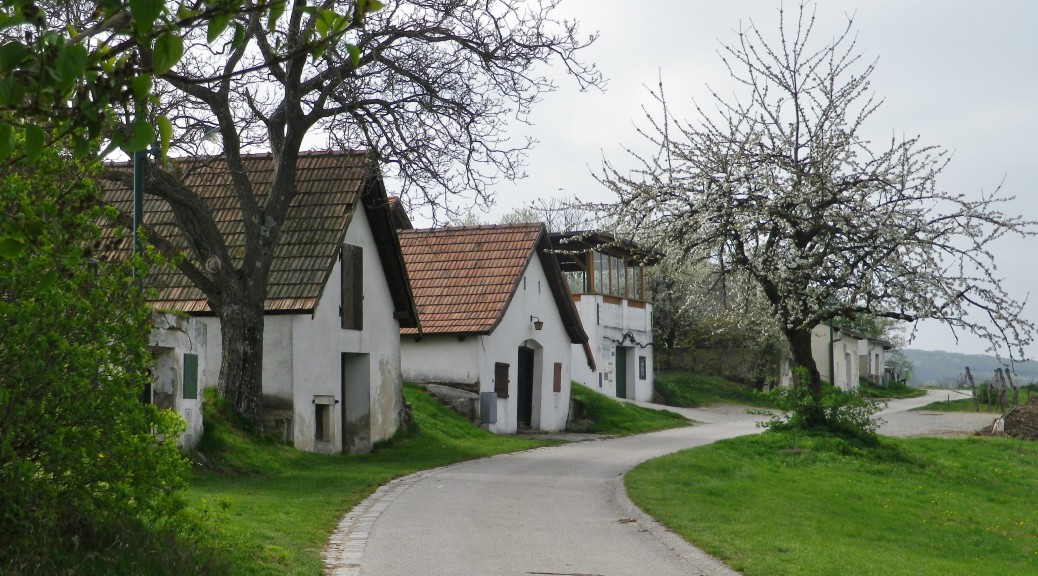Farming, believed to have arisen about 13,000 years ago, started with grains and vegetables. Later, vines were cultivated, and wine produced, about 7,000 years ago. Nowadays in Austria’s Carnuntum region, wind is being harvested in the same fields that made Pannonia famous for its grains in earlier times. Fortunately, there are a lot of vines as well. And the local district tourism office has developed a series of hiking and biking routes to show-case them.
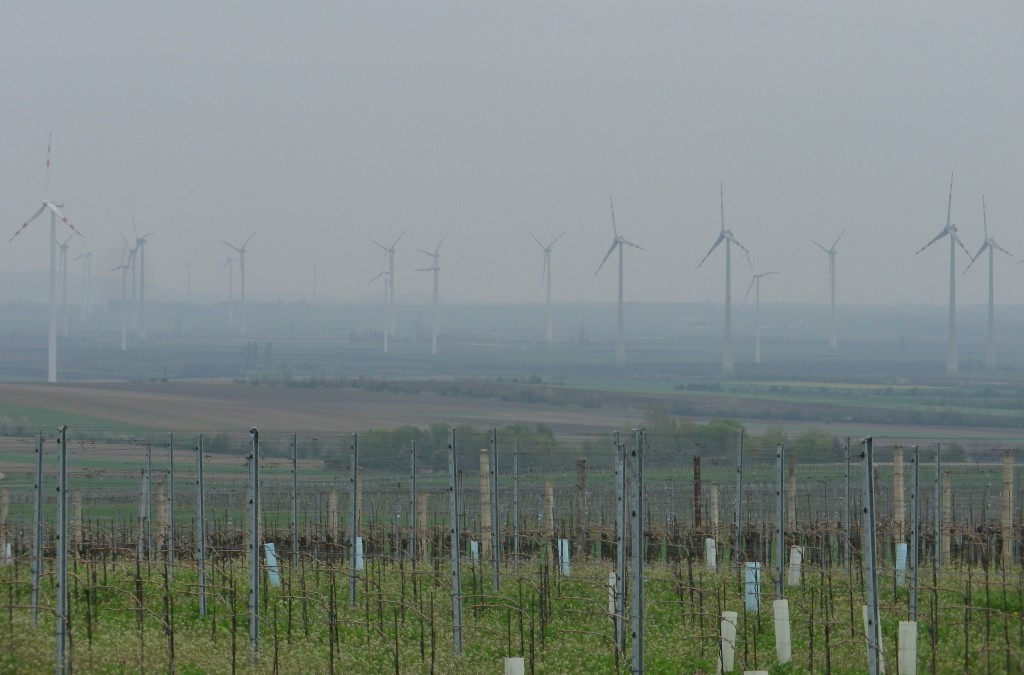
From the small rise at the start of the hike, at a very old church set within the boundaries of a former Roman fort, I could see the stretch of the Pannonian (also known as the Carpathian) Basin, as it continued east from Hoeflein, south of Vienna. The plains within the basin have long been known for rich, loamy loess soils. This area was once an outpost of the Roman Empire, and the term Pannonian derives from the Roman name for this district.
Along this hike, I came across the remains of a Roman villa. (Some of the rest of it may be found in the old church, as many stones bear Roman markings.) The Romans appreciated the great fertility of the land here, and doubtless this landowner was engaged in raising grain and likely some grapes. Both the Celts and the subsequent Roman landowners cultivated grapes and produced wine here, a cultural tradition corresponding to the archeological evidence found in this area, providing a link to modern times.
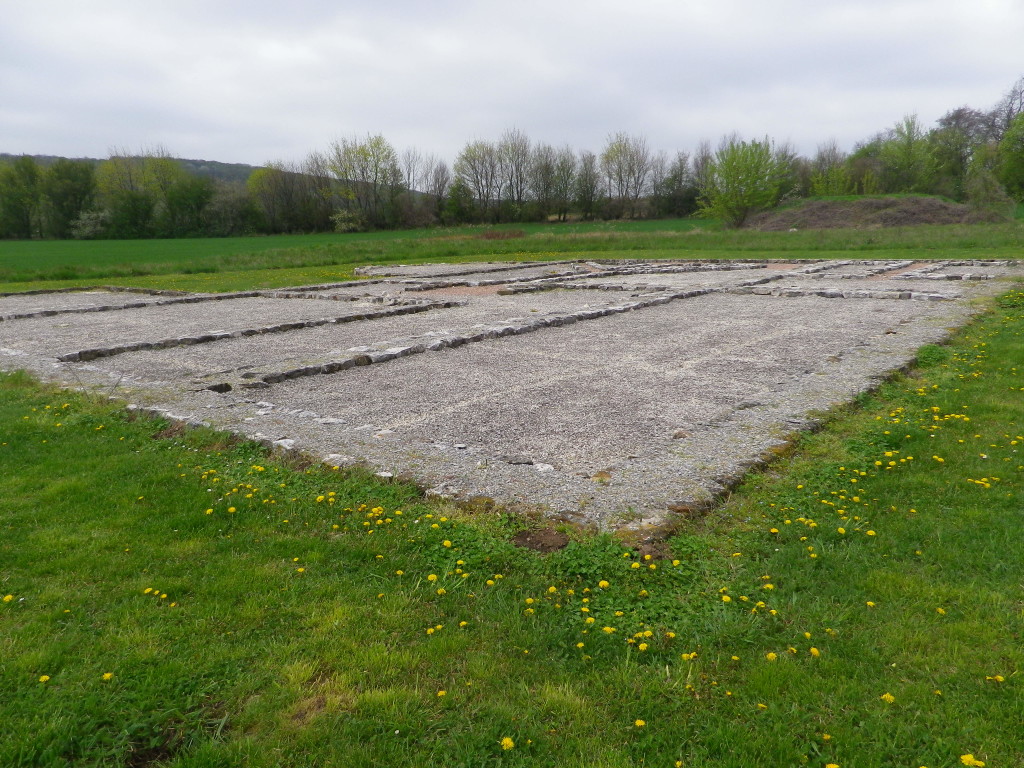
The vineyards surround the church, the Roman villa, and the little village. They roll up and down the rises and ravines in this gently undulating countryside. This is true farming country I was reminded, as farmers on tractors rattled past me to return to the vineyards after lunch. Not a tourist in sight, which given the relative proximity to Vienna, and the growing fame of Carnuntum wines, surprised me.
One of the reasons I chose this hike among several was its passage through some of the eastern-most heights of the region, and its passage through a wood. Its bright spring green leaves provided a cheery note on a gray day. The isolated wood was chockful of birds singing lustily, modest shrines and crosses, and even a modern chapel from a local wine-producing family.
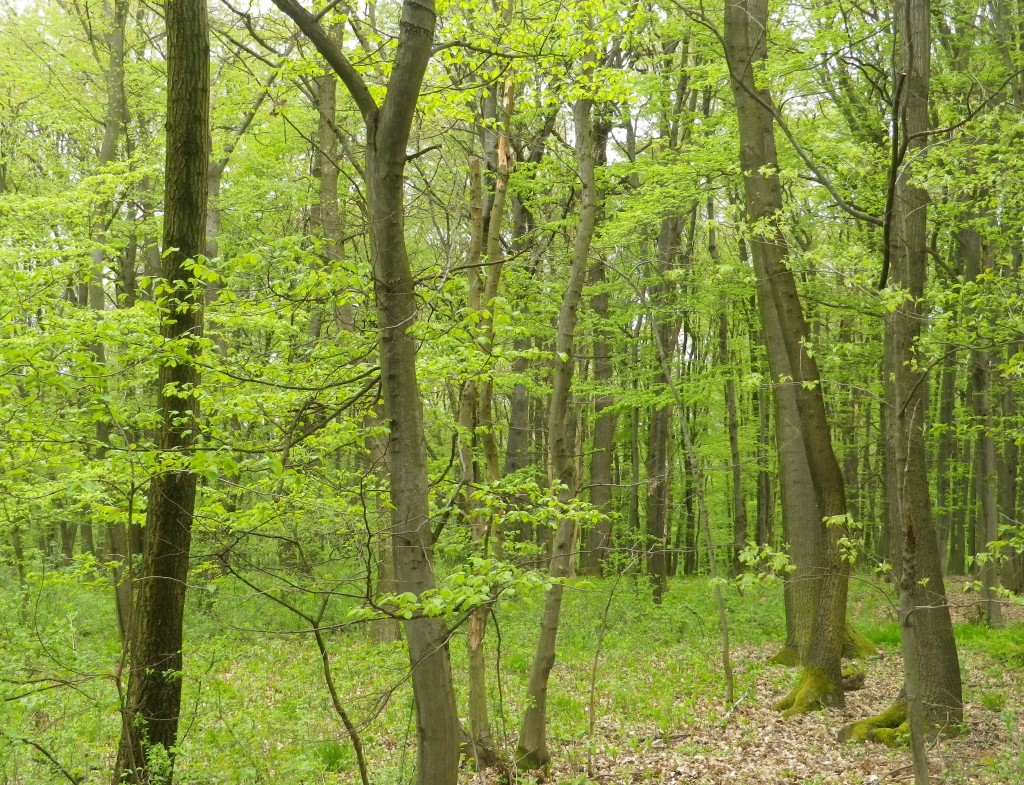
Leaving the wood and walking though quite a stretch of Blaufraenkisch, Zweigelt and Merlot vines belonging to the Markowitsch Winery from the neighboring village of Goettlesbrunn, the path skirted the village of Hoeflein, and headed up to the Kellergasse.
These Kellergasse, (“Cellar Lanes”), are traditional in many Austrian wine-producing areas. Ranged along a narrow lane, away from the village, uniquely designed small cellars are usually cut into a hillside and extended into the lane from there. Nowadays, they serve as heuriger (wine taverns) at certain times of the year, so are often busy with people coming and going to sample the local wine and have a bite to eat. Sadly, none of the heuriger were open the day of my hike. (Note to self: Since heuriger operate on a rotating schedule, and the schedule offers limited hours in early spring, plan future hikes in Austria in late spring, summer, or early fall.)
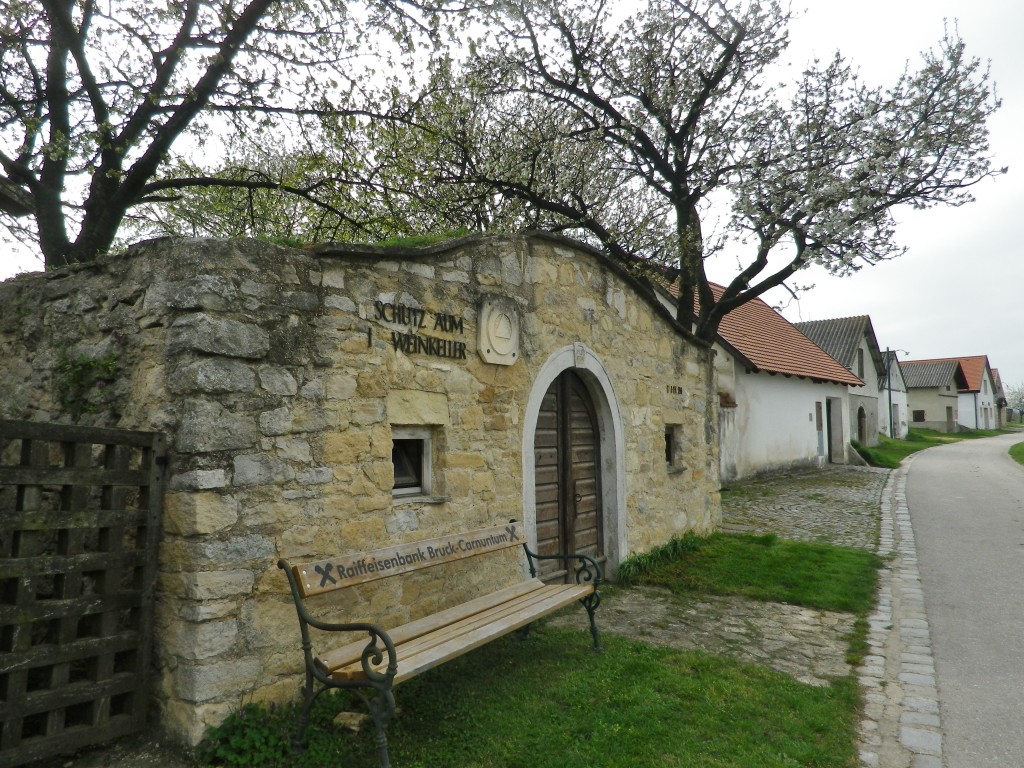
As I walked along the lane, there was a sense of history and tradition, highlighted by panels from a short wine education trail. Looking from the heights of the Kellergasse, back to the old church and beyond, I nonetheless was struck by the future: Dozens of energy windmills down in the plains dominated the view. This harvest of the future will hopefully help sustain the vintners and wine-making tradition in this area of delicious wines for centuries to come.
